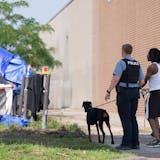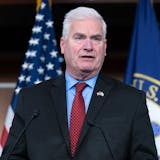Two scientific teams working separately have manipulated a "bird flu" strain of the influenza virus in such a way that they may have created the next deadly human plague.
One of those teams is in the Netherlands. The other is led by a virologist at the University of Wisconsin-Madison's veterinary school, whose laboratory is just 250 miles east of the Twin Cities.
This groundbreaking but frightening work has generated an escalating international debate over whether to publish the research in full.
While this is certainly a dilemma -- would publication provide a blueprint to bioterrorists? -- the controversy over alleged censorship has overshadowed other critical issues the research raises.
Questions that also need a high-profile airing: Should scientists create pathogens that could sicken or kill millions if released accidentally or deliberately? If so, what laboratory safeguards are adequate?
And, given the bird flu's ability to morph into a bug both lethal and easily spread in humans, is the world prepared for a potential pandemic? This virus is deadly in birds and sweeps through flocks, but rarely infects humans.
People who do contract it, however, often die. At least 565 people have contracted "bird flu" since 2004; about 59 percent of them have died.
Former journalist Laurie Garrett, now a senior fellow with the Council on Foreign Relations, deserves credit for pointing out that the bird flu debate so far has focused on the "wrong question."

